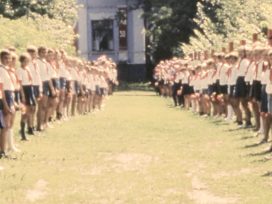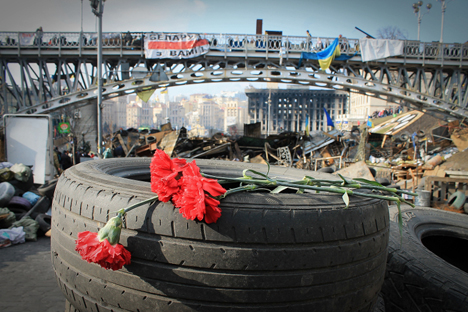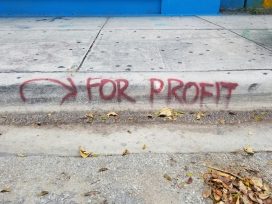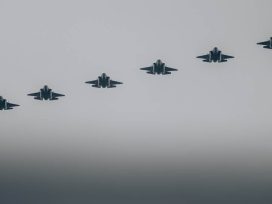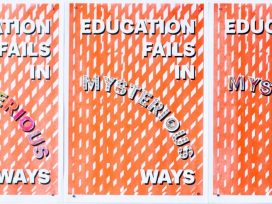Bohdan Solchanyk, a 29-year-old PhD candidate at the Ukrainian Catholic University, was shot dead by a sniper in the very centre of Kyiv on Thursday last week – alongside dozens of other protesters killed that day, as the government implemented the so-called “antiterrorist operation”. I knew Bohdan personally, and I really whish all terrorists in the world were like him.
I knew him as a friend of my daughter. He was one of many bright people all over Ukraine with whom she networked in carrying out various projects or exchanged ideas and news via Facebook. Many of them were leftist, and some rightwing, but their heated ideological debates never became personalized. They learned to distinguish between ideas and people – something rather unusual in my generation and virtually non-existent among our predecessors.
Bohdan had always taken a reconciliatory stance. “When so many people are frustrated but passive”, he argued, “any civic activity should be welcomed, regardless of our ideological disagreements. People transform themselves in the process of cooperation – when they gather in the streets, paint placards, write petitions, publish their own newspapers or journals or leaflets, fight for their legitimate rights and interests.”
He was at the Maidan protests from the very beginning and was irrepressibly optimistic: “Look at these people”, he told my daughter enthusiastically, “look at their commitment and solidarity! One simply has to stay with them, and fight for a better country!”
It is still not quite clear who ordered the bloodbath that day, but the fact is that most victims received very precise shots in the head or the chest – clear proof that the main goal of the “operation” was killing. The very labelling of the protesters as “terrorists” was actually entirely new in Ukraine. Until Yanukovych’s return from Sochi, the protesters were smeared as “radicals”, “fascists”, and “putschists” in the pro-government propaganda, but the top officials refrained, in most cases, from this language. As long as they negotiated (or pretended to negotiate) with the leaders of opposition, they preferred to distinguish the “fascists” and “radicals” from those protesters with “healthier” intentions, promoting the latter group in order to distance themselves from the former.
The sudden emergence of the Putinesque term “anti-terrorist operation” in Yanukovych’s post-Sochi parlance was ominous. It meant that everything was permitted and one should expect the worst. In 1999, as Anne Applebaum points out in the Washington Post, “the term granted Russian soldiers carte blanche to destroy Grozny, the Chechen capital. This is why so many reacted with horror when the Ukrainian defence ministry warned that the army “might be used in anti-terrorist operations on the territory of Ukraine.”
The ruthless killing of nearly a hundred protesters completely delegitimized the regime – both domestically and internationally. Despite the regime’s expectations, the protesters on the Maidan did not run away after the bloodshed but stood defiant. New people from all over the country rushed to support them, bypassing police cordons and transport blockades. Local councils in western regions took matters into their own hands, subordinated the local police, and renounced obedience to central government.
The prospect of civil war in a country of 46 million has finally forced the EU to shift its focus from words to deeds, and make sanctions against Ukrainian officials a reality rather than merely the subject of wishful thinking. This predictably triggered the split within the ruling party, as more and more of its members rushed to distance themselves from the government’s criminal policies. Within a day, the regime fell like a house of cards, something that resembled the collapse of the Soviet authorities in 1991, and of their east European satellites two years prior to that.
Back then, the Ukrainian democratic and national liberation movement was hijacked by the communist nomenklatura, who could get along fine without party membership but not without their old habits. In 2004, Ukrainians made a second attempt to complete unfinished business. They staged a spectacular non-violent Orange Revolution that brought new people to power but failed to enforce much-needed institutional change. They allowed their leaders to play with the rules rather than by the rules. And the resulting lawless, dysfunctional democracy compromised itself to such a degree that the Orange electorate punished their leaders by staying at home and observing how supporters of Yanukovych voted him into office by dint of a slight majority.
The result, as we know, was disastrous. In less than four years, the president and his team destroyed any remnants of an independent judiciary, privatized the police and security services and effectively monopolized both Ukrainian politics and the country’s economy, both of which were handed over to the “Family” – the president, his two sons and their close friends, mostly from the Yanukovych’s native Donbas region.
Under the circumstances, the third Ukrainian revolution turned violent, following the Romanian rather than Polish, East German or Czechoslovak pattern. Alexander Motyl, professor of political science at Rutgers University, predicted this a year ago. Then he wrote that in a society so humiliated and exploited as that in Ukraine, the masses are very likely to turn violent the moment the oppressors start to look vulnerable and weak, and individuals or groups with violent agendas are anyway at large. “The first two conditions”, he argued, “are already present in Ukraine and both will only intensify as the economy continues to stagnate and Regionnaire abuse of the population continues. The third could easily emerge, especially if a brittle, sultanistic regime resorts to violence itself. Weak regimes often employ violence in the hope of quashing internal opposition. More likely than not, their violence only induces radically inclined individuals and groups within society to respond with violence”.
Restoring order is the major task for the new Ukrainian government. Alexander Motyl believes that, “following the extensive institutional destruction wrought by Yanukovych and the Party of Regions, Ukraine will have to be reconstructed from top to bottom. Mere reform will no longer be enough. Even ‘radical reform’ may not quite accurately capture the magnitude of change that Ukraine will have to endure to emerge from the ‘Yanukovych Ruin’ politically energized and rejuvenated, rather than enervated and ossified”.
But the problem is that the new Ukrainian government faces not only this strategic task but also numerous routine issues; like paying domestic and international bills, maintaining social order and curbing attempts at mob justice against the most hated members of the ancien regime. The EU’s guardianship is highly important in these circumstances, but probably even more important is the emergence of new people with no history of corruption, or nepotism or of dubious business activities. Established politicians like Yulia Tymoshenko or Viktor Yushchenko should stay out of the political process: for the sake of the new Ukraine they had a chance to build in 2005, a chance that they pathetically failed to fulfil.
The Maidan should remain – at least for some time – and watch the new government’s next moves. The main threat to the revolution comes not from Moscow or Kremlin-sponsored Crimean separatism. Nor does it come from the far-right groups that won some prominence during the struggle. The biggest threat comes from within – from old habits and old boy networks, from sophisticated corruption schemes and the funds of oligarchs (the unsavoury size and sources of which may be impossible to determine in full), and, finally, from the lack of much needed know-how as well as political will on the part of the revolutionaries. The rapid falls of anciens regimes are often deceptive. In most cases they are as resilient as the second model of James Cameron’s Terminator.
The two Ukrainian revolutions – of 1991 and 2004 – rather pitifully illustrate the rule. The new revolution, however, was not nearly so peaceful. It cost the lives of so many bright and courageous people, that Ukrainian politicians simply have no moral right to spoil it by pursuing their selfish, partisan and parochial goals.
